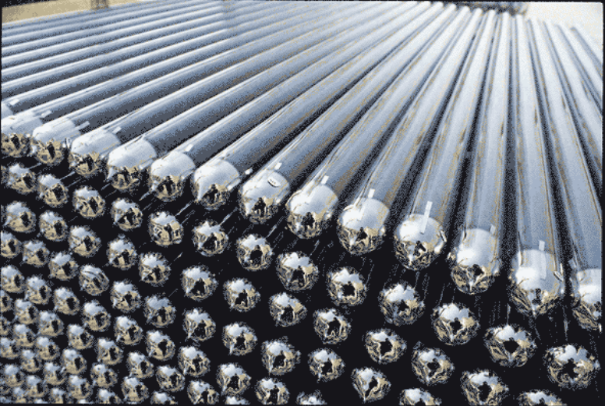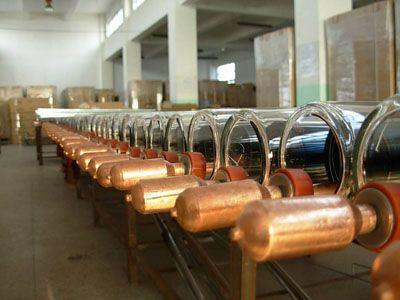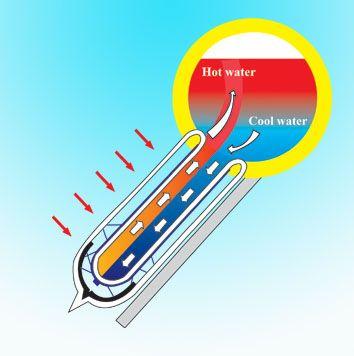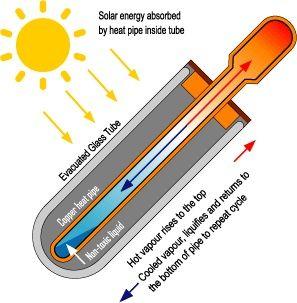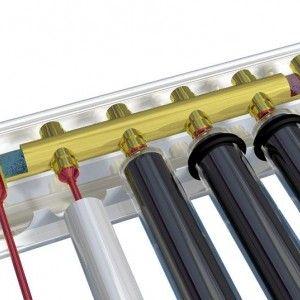The principle behind solar vacuum tubes is simple. A solar vacuum tube works similar in design to a coffee thermos. It consists of two layers of glass with a vacuum in between the layers. The outer layer of the solar tube is Borosilicate glass which is very low in iron and allows 98% of light energy to pass through. The 2nd inner layer has very special coatings applied to it.
The SunRain solar vacuum tubes Northern Lights supplies use a patented 3-Layer process that results in a coating that can absorb more of the sun's energy while being able to withstand temperatures in excess of 300 C degrees (575 F) without deteriorating. This coating is what makes these solar heat collectors superior to any other collector on them market. The special selective coating changes the short wave solar radiation into long wave heat radiation and is almost 94% efficient meaning only 6% of the suns energy is lost!
The absorbed solar radiation is then transferred to a heat transfer fluid with in the tube (liquid inside the thermos), This liquid quickly heats up and rises to the top. In an open vacuum tube system the potable water is heated directly with in the vacuum tube. Thermosiphon causes the hot water to rise and be replaced by colder water. The hot water is the collected in the top collection chamber and pumped though the system.
